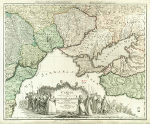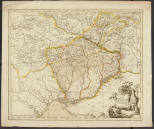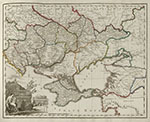The Russo-Turkish Wars and Origins of Novorossiya
The Russo–Turkish wars (or Ottoman–Russian wars) were a series of wars fought between the Russian Empire and the Ottoman Empire between the 17th and 20th centuries. It was one of the longest series of military conflicts in European history.[1] Except for the war of 1710–11 and the Crimean War, which is often treated as a separate event, the conflicts ended disastrously for the stagnating Ottoman Empire; conversely they showcased the ascendancy of Russia as a European power after the modernisation efforts of Peter the Great in the early 18th century.
New Russia Governorate, or Novorossiya Governorate (Russian: Новоросси́йская губе́рния; translit.: Novorossiyskaya guberniya), was a governorate of the Russian Empire in the previously Ottoman and Cossack territories, that existed from 1764 until the 1783 administrative reform. It was created and governed according to the "Plan for the Colonization of New Russia Gubernia" issued by the Russian Senate.[1] It became the first region in Russia where Catherine the Great allowed foreign Jews to settle.[1] In 1796, the governorate was re-established, but not with the centre in Kremenchug but rather in Ekaterinoslav, and in 1802 was split into three governorates: the Ekaterinoslav Governorate, the Taurida Governorate, the Nikolayev Governorate (known as the Kherson Governorate from 1803 onward).
Full articles at Wikipedia here and here.
|
Theatre de la Guerre entre les Russes, les Turcs et les Polonois: tire'du Cabinet de M. le marquis de, Ministre d'Etat (1769) G.L. Le Rouge
Source: The National Library of Poland |
 |
|
Charte von den oberhald und seitwarts dem Schwarzen Meere gelegenen Russischen und Turkischen Landern (1788) D.F. Sotzmann
|
 |
|
Mappa Generalis Gubernii Novae Russiae: in Circulos Divisi (1799) N.Zubkov
Source: The National Library of Poland |
 |
|
Novorossijskoj guberniia (1800) A. Wilbrecht
Source: Wikipedia |
 |
